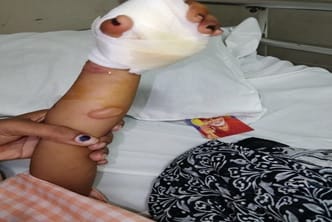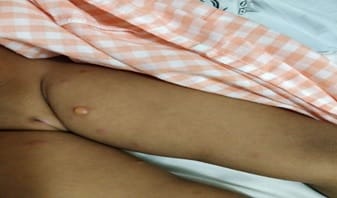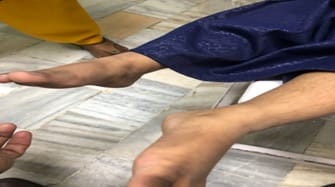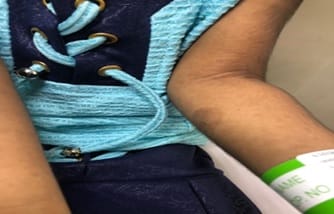Diagnostic challenge: chronic bullous dermatosis of childhood
Pasupathy U.1*, Bhaskar N.2, Raghunathan J.3, Chidambaram S.4
DOI: https://doi.org/10.17511/ijpr.2020.i04.05
1* Umapathy Pasupathy, Professor, Department of Pediatrics, Sri Ramachandra Institute of Higher Education and Research, Chennai, Tamil Nadu, India.
2 Nithya Bhaskar, Junior Resident, Department of Pediatrics, Sri Ramachandra Institute of Higher Education and Research, Chennai, Tamil Nadu, India.
3 Janani Raghunathan, Junior Resident, Department of Pediatrics, Sri Ramachandra Institute of Higher Education and Research, Chennai, Tamil Nadu, India.
4 Sathya Chidambaram, Junior Resident, Department of Pediatrics, Sri Ramachandra Institute of Higher Education and Research, Chennai, Tamil Nadu, India.
Chronic bullous dermatosis of childhood is a rare acquired autoimmune disease characterized by subepidermal blistering disease of childhood with linear deposition of IGA on immunofluorescence. A 3-year-old female child presented with lesions mimicking Hand foot mouth disease which gradually progressed to isolated multiple bullous pruritic lesions all over the body. The absence of a characteristic string of pearl appearance, the histopathological findings, and the response to immunosuppressants lead us to the diagnosis of pox like lesions. Histopathology revealed parakeratosis with increased eosinophils. The child finally responded to a combination of cyclosporine and steroids. Although CBDC is common in lower trunk and genitalia it can also present as generalized bullous lesions. Here the current study reports a case of chronic bullous dermatosis of childhood that presented as a diagnostic challenge.
Keywords: Chronic bullous dermatosis, Diagnostic challenge, Generalized bullae, Autoimmune Disease, IGA deposition, Parakeratosis
| Corresponding Author | How to Cite this Article | To Browse |
|---|---|---|
| , Professor, Department of Pediatrics, Sri Ramachandra Institute of Higher Education and Research, Chennai, Tamil Nadu, India. Email: |
Pasupathy U, Bhaskar N, Raghunathan J, Chidambaram S. Diagnostic challenge: chronic bullous dermatosis of childhood. Pediatric Rev Int J Pediatr Res. 2020;7(4):190-193. Available From https://pediatrics.medresearch.in/index.php/ijpr/article/view/584 |


 ©
© 


